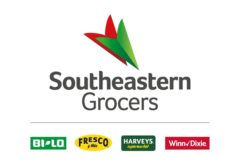Home » Keywords: » grocery shoppers
Items Tagged with 'grocery shoppers'
ARTICLES
Among the major departments that Circana tracks for PLMA Refrigerated was ahead 16% followed by Frozen at 8%.
Read More
Southeastern Grocers Strengthens Safety Measures to Protect Communities from COVID-19
Grocer to add Plexiglas partitions and enforce social distancing protocols in stores.
March 27, 2020
SpartanNash to Install Point-of-Sale Sneeze Guards in all Retail Stores, Pharmacies, and Fuel Centers
Sneeze guards to provide added measure of safety for associates and customers.
March 25, 2020
SpartanNash Retail Stores Reserve Time for Seniors, Pregnant Women, and Immunocompromised Store Guests
Effective immediately, Tuesdays and Thursdays between 7 a.m. and 9 a.m. will be set aside as reserved hours for vulnerable populations.
March 20, 2020
Brookshire Grocery Co. Offers Daily 5% Senior Discount in Response to COVID-19 Pandemic
Grocery chain strongly encourages community to respect the first hour of store opening for senior customers.
March 18, 2020
Get our new eMagazine delivered to your inbox every month.
Stay in the know on the latest food and beverage manufacturing markets.
SUBSCRIBE TODAYCopyright ©2024. All Rights Reserved BNP Media.
Design, CMS, Hosting & Web Development :: ePublishing











